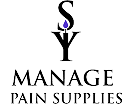Cosmetics
How collaboration is reworking ingredient security
The sweetness and private care {industry} has made important strides in enhancing ingredient security, with 70% of elements now well-characterized for his or her human and environmental impacts. This progress is a response to rising shopper demand for transparency and safer merchandise, in addition to growing regulatory pressures.
We spoke to ChemForward’s Invoice Walsh (Safer Chemistry Influence Fund Government Director), Stacy Glass (Co-founder and Government Director) and Heather McKenney (Science & Safer Chemistry Lead) to be taught extra concerning the group’s new report, its findings, and its potential influence on magnificence {industry} stakeholders.
Business collaboration drives progress
The report highlighted the function of industry-wide collaboration in advancing ingredient security, and Walsh attributed a lot of this progress to early efforts by manufacturers that prioritized buyer issues about ingredient security. “The Know Higher, Do Higher (KBDB) Collaborative was shaped to sort out these points collectively, relatively than leaving particular person corporations to shoulder the burden alone,” Walsh defined.
This collaborative effort allowed manufacturers to share knowledge, fill crucial gaps, and elevate all the {industry} by setting new requirements for transparency and security.
The KBDB Collaborative, which incorporates magnificence giants like Sephora, Ulta, The Trustworthy Firm, and Credo Magnificence, exemplifies how collective motion can speed up progress. “The collaborative permits manufacturers to honor clients’ issues and elevate their popularity and that of the wonder and private care {industry},” Walsh added.
Addressing the 30% hole: Challenges and alternatives
Whereas the characterization of 70% of magnificence elements is a significant achievement, the remaining 30% poses important challenges. Glass emphasised the significance of complete chemical hazard assessments (CHAs) in addressing this hole.
“The collaborative is working to extend the characterization of those chemical substances to realize an understanding of their potential human and environmental impacts,” Glass famous.
She additionally defined that the evolving nature of the wonder {industry} implies that new elements are continually being launched, requiring ongoing evaluation and characterization, and careworn that whereas manufacturers and retailers are at the moment main these efforts, it should finally be the accountability of suppliers to make sure their elements are totally assessed. One instant approach suppliers can contribute is by having their trade-name supplies assessed and included within the shared repository.
Chemical substances of concern: A name to motion for producers
The report recognized ten high-frequency chemical substances of concern generally present in magnificence merchandise, underscoring the necessity for pressing motion from producers. McKenney described these chemical substances as a “name to motion” for the {industry}. “Producers should prioritize their chemical administration method for these chemical substances and expedite the transition to safer options,” she suggested.
McKenney outlined a number of methods for addressing these chemical substances, together with:
- Increasing restricted substances lists for retailers.
- Reformulating merchandise to remove or scale back high-hazard chemical substances.
- Demanding better transparency and disclosure from suppliers.
By adopting these measures, producers can make sure that they aren’t solely assembly shopper expectations but additionally staying forward of regulatory pressures.
The facility of shared knowledge and collaboration
A key takeaway from the report is the transformative function of shared knowledge in bettering ingredient security throughout the {industry}. Glass highlighted that the shared repository of information not solely lowers the price per consumer but additionally will increase the consistency and reliability of the info.
“Shared knowledge is an enabler,” she said. “Characterizing the hundreds of chemical substances utilized in magnificence and private care can be daunting for a single participant. However, collectively, the shared repository will increase the consistency of the info and offers formal mechanisms for resolving variations in interpretation.”
For producers, this knowledge is an important useful resource for reformulation and innovation. By utilizing the repository to determine safer options by perform, corporations can take proactive steps towards growing safer, extra sustainable merchandise.
A roadmap for the long run
For producers and suppliers, these developments sign a shift within the magnificence {industry} towards a future the place safer elements aren’t only a pattern however a necessity. As shopper expectations evolve, and international laws on chemical security tighten, those that fail to prioritize transparency and safer chemistry danger falling behind.
“Balancing innovation with security requires a proactive evaluation of elements,” stated Glass. “Proactive security assessments allow manufacturers to ‘fail quick’ and keep away from introducing identified hazardous elements into new merchandise.”
Smaller manufacturers and suppliers, particularly, are suggested to benefit from the shared assets and knowledge obtainable by initiatives just like the KBDB Collaborative. “Everybody can do that work,” Glass emphasised, encouraging smaller gamers to conduct Ingredient Intelligence Studies and leverage the shared repository to information their reformulation efforts.
As McKenney succinctly concluded, “It’s going to by no means be cheaper and simpler to reformulate utilizing safer elements than it’s at present.” For producers and suppliers, the time to behave is now, earlier than regulatory or shopper pressures make reformulation a reactive, relatively than proactive, technique.

